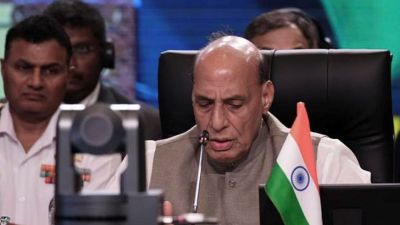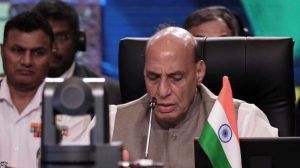Stay updated with the latest - Click here to follow us on Instagram
Japan’s Ishiba could face leadership challenge on Monday
While the policy paralysis around such a vote could add pain for an economy hit by US tariffs, markets are focusing more on the chance of Ishiba's replacement by an advocate of looser fiscal and monetary policy such as Sanae Takaichi.
 Ishiba had earlier refused calls from within his Liberal Democratic Party (LDP) to step down and take responsibility for its July loss in an upper house election. (File)
Ishiba had earlier refused calls from within his Liberal Democratic Party (LDP) to step down and take responsibility for its July loss in an upper house election. (File)Lawmakers of Japan’s ruling party will vote on Monday whether to hold an extraordinary leadership election that could oust embattled premier Shigeru Ishiba and have a significant impact on the world’s fourth largest economy.
Concern over political uncertainty has led to a sell-off in the yen and Japanese government bonds (JGB) this week with the yield on the 30-year yield hitting a record high on Wednesday.
While the policy paralysis around such a vote could add pain for an economy hit by US tariffs, markets are focusing more on the chance of Ishiba’s replacement by an advocate of looser fiscal and monetary policy such as Sanae Takaichi, who has criticised the Bank of Japan’s interest rate hikes.
“The dominant market bet is for the LDP to hold a leadership race and for Ishiba, known as a fiscal hawk, to lose his job,” said Katsutoshi Inadome, senior strategist at Sumitomo Mitsui Trust Asset Management.
“We’ll likely see further selling in Japanese government bonds as whoever succeeds Ishiba probably will be more open to loosening fiscal policy than him.”
Ishiba has refused calls from within his Liberal Democratic Party (LDP) to step down and take responsibility for its July loss in an upper house election.
Staying in power, however, has become increasingly hard for him. Having lost a majority in both houses of parliament, his ruling coalition needs opposition support to pass legislation.
Wary of being attached to the unpopular premier, opposition parties have refused to cooperate. Even some of Ishiba’s cabinet members are now calling for the choice of a new party leader.
Party rules require at least half the LDP members to request holding the race, which could follow this month or in October.
Such a leadership race could delay parliament’s passage of an expected supplementary budget aimed at cushioning the blow to households from rising living costs.
Eurasia Group gave odds of 60% that Ishiba would not survive.
“Ishiba’s poor performance as party leader in lower and upper house elections and events in recent days, including former prime minister Aso Taro announcing his support for the special election, have turned the tide against Ishiba,” said David Boling, director of Japan and Asian Trade at Eurasia.
That puts the focus his potential successor.
While the LDP lacks a majority in parliament, its leader would still be the favourite to become next prime minister, due to a fragmented opposition.
The choice could affect not just the scale of fiscal stimulus, but the timing of the BOJ’s next interest rate hike, analysts say.
Front-runners include 44-year-old Shinjiro Koizumi, a charismatic agriculture minister popular with the public, but whose views on economic policy are unknown.
Takaichi, who represents the party’s right wing, is also seen by some analysts as a strong candidate to become Japan’s first female prime minister. She lost the September leadership race to Ishiba in a run-off vote.
While several other candidates are seen in the fray, Takaichi stands out for her vocal opposition to BOJ rate hikes and calls to ramp up spending to underpin a fragile economy.
After ending a decade-long, massive stimulus programme last year, the BOJ raised interest rates to 0.5% in January on the view that Japan was on the cusp of sustainably meeting its inflation target of 2%.
Most economists polled by Reuters expect the central bank to raise rates again this year, with some betting on a hike in October.
“Under Takaichi, fiscal discipline will be out the window,” Inadome said. “Markets still remember the time she made it to the run-up in September, and triggered huge selling in JGBs.”






- 01
- 02
- 03
- 04
- 05

























